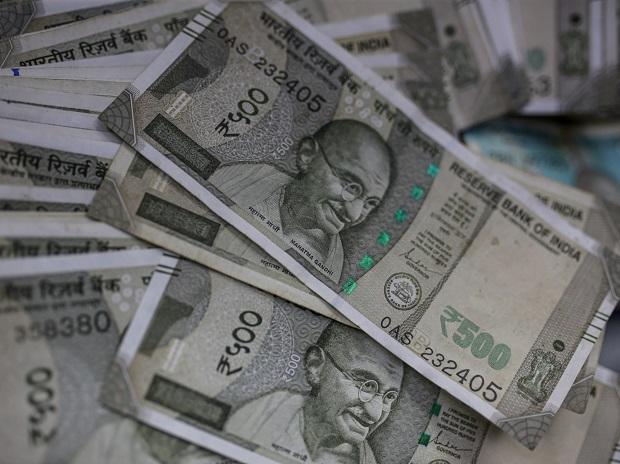[ad_1]
After coming within touching distance of weakening past the 83 per dollar mark for the first time in four months, the rupee recouped losses on Monday as the Reserve Bank of India (RBI) likely stepped in to prevent excess volatility in the currency market through dollar sales.
The central bank is said to have intervened on a sustained basis this month to shield the rupee from turbulence in the face of sharp gains in the US dollar globally, traders said. Consequently, the Indian currency has fared better than 11 other emerging market (EM) currencies so far this month, Bloomberg data showed.
On Monday, the rupee settled at 82.85 per US dollar as against 82.75 per dollar at previous close. So far in 2023, the rupee has depreciated 0.13 per cent against the US dollar.
On Monday, the rupee weakened to a low of 82.95 per dollar intraday as sentiment for EM currencies weakened after certain US data sets strengthened the case for the Federal Reserve to continue hiking interest rates. The last time the rupee had weakened past the 83-mark intraday was on October 20, 2022. On that day, the Indian currency had touched its all-time intraday low of 83.29 per US dollar.
RBI intervention
The US dollar index, which measures the greenback against six major currencies, was at 105.16 at 3:30 pm IST versus 104.72 at the same time on Friday.
However, the RBI’s consistent sale of dollars from its reserves has kept the rupee from depreciating as much as the others. So far in February, the rupee has weakened 1.1 per cent against the US dollar, much lower than 11 other EM currencies, Bloomberg data showed. The South Korean won and the Thai baht have weakened more than 6 per cent each.
On Monday alone, the central bank was said to have sold close to $1 billion in the currency market. The RBI’s stated position is that it intervenes in the currency market to prevent excessive volatility.
Meanwhile, Indian sovereign bonds weakened on Monday, too, with the yield on the 10-year benchmark bond rising past the 7.45 per cent level for the first time since November 7, 2022. A combination of factors, including higher-than-expected domestic inflation data for January and hardening US bond yields have soured the appetite for the bonds.
“RBI, I think, is more or less targeting relative volatility than relative performance because it allows for flexibility at a time of global uncertainty. Secondly, a slightly weaker rupee is not bad from the perspective of exports,” Anindya Banerjee, vice president, currency derivatives and interest rate derivatives at Kotak Securities, said.
He said the RBI was intervening in both offshore and onshore. “I think RBI’s intervention in the market today was close to a billion dollars,” he said.
The RBI’s foreign exchange reserves have declined by $15.49 billion since January 27, latest data showed. A part of the decline is due to dollar sales in the currency market, traders said.
Bhaskar Panda, HDFC Bank’s executive vice-president, overseas treasury, sees the rupee in a range of 82.50-83.00 to the dollar over the near term. He continues to see pressure on the Indian unit, given the latest signals on US interest rates. “If 83 breaks, then we are in for stronger movements. That can happen if there is sustained strength in the dollar index; at present the RBI has been supporting the rupee,” he said.
Banerjee said if the dollar index were to continue strengthening, a “sharp adjustment” towards 84 to a dollar could occur.
“Data all around the globe is pointing to a higher reset on terminal interest rate expectations. For now, the 7.45 per cent level may hold because there is demand from long-term investors, but going ahead the bond market faces a lot of uncertainty,” Naveen Singh, ICICI Securities Primary Dealership head of trading said.
[ad_2]
Source link



